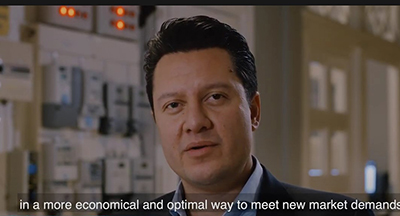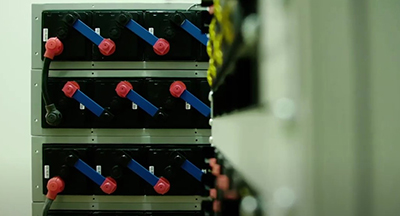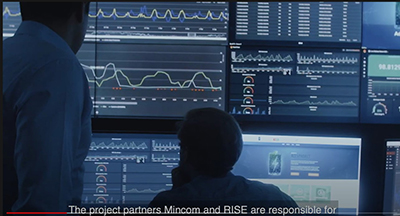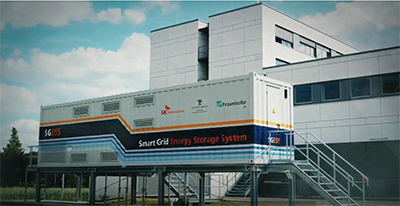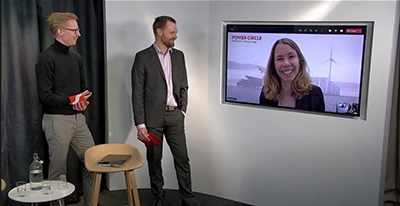WP Reports and About the project
WP Reports and Videos
WP2: Operando Nanoplasmonic sensing - a means of imporving battery control
Insplorion AB
This WP report explores the potential for equipping lithium-ion battery cells with intergrated internal sensors for improved state estimation and operation. As battery control systems continue to evolve and new battery operating strategies are being formulated based on acquired data, the disconnect between physicochemical cell characteristics and externally measured parameters becomes increasingly evident. Furthermore, the lack of accurate estimate of the battery state results in overdesigning battery management systems to manage uncertainties in battery SoC and SoH, thus underusing the cell´s capability. Could intergrated sensors play a part in obtaining truly dynamic battery management?
WP3: The Adaptive Control of Energy Storage
Embriq AB
The goals of WP3 was to facilitate a data platform handling input data on Electricity market prices, Ancillary services process, Power quality status and impact, Battery SoC and SoH, load factors of grid components, network status parameters, generation and cunsumption patterns and other external data suck as calendar events and weather conditions.
The goals was also to enabled data integration through specification (data conversion tables), develop pattern recognition algorithms that optimaize the business case depending on all the selected use cases and the input data and, based on analysis and conclusions in the project and adaptive software system, using new pattern recognition technologies, to manage our energy storage demo sites.
WP4 GEC: Development and testing of adaptive control of battery storage in housing association
Glava Energy Center
The overall objective of WP4 GEC is to create a test environment to develop, implement and test advanced measurement technology and adamptive control algorithms for energy storage systems in order to allow for improved economics of operation.
WP4 RISE: Demonstrator Mariestad
RISE
In this report the work and result from test-site Mariestad will be presented. The report covers a description of the system, a summary of the work process as well as lessons learned from the demo-site. Furthermore, the report includes a brief outlook on potential additional business opportunities for hydrogen storage units and a theoretical economic analysis based on the demonstrator.
WP4 Fraunhofer IFF: Multi-functional use of battery storage in micro-grid
Fraunhofer IFF
Multi-functional use of battery storage in micro-grid.
WP5: Deployable Storage-to-Cash solution
MINcom Smart Solutions GmbH
Payment transactions and billing solutions are becoming increasingly important in the energy business and future energy market places. There is an increasing demand for “energy-to-cash” solutions, e.g. for load balancing, for e-car charging, for power quality, for SMEs providing local RES production, and other energy related services. Additionally, new regional market places for local energy trading will emergy, which would require billing service to handle flexibility and flexible tariffs on demand and on production side.
About ACES Project
ACES Vision
Adaptive battery storage is a widely spread commercially viable component in an affordable 100% renewable power system.
ACES Mission
To contribute to an affordable 100% renewable power system with effective battery storage solutions using artificial intelligence
Innovative Solutions
- Stacks of battery storage services with a single adaptive controller.
- Class A power quality monitoring and forecasting using pattern recognition technology.
- Nano sensor health monitoring inside battery cells.
- Innovative multi-service billing solutions.
- Laboratory testing and live environment demonstrators.
ACES Project goals
- Adaptive control is a key component making battery storage commercially viable.
- Improve the operation window of a battery storage system during its life-time by monitoring health effects and performance with NPS
sensors. - Realise attractive service offerings to market actors.
- Specify the potential to use a battery storage system on different market environments simultaneously.
- A deployable storage-to-cash solution that eases market adoption in combination with realized better return-on-investment on battery
storage investment. - Share experiences and create understanding on the requirements and barriers for energy storage projects and their potential application;
identify what role the different project partners can fill in future energy storage applications and the possible services surrounding
it, and being able to shape their future product offerings in the field of battery storage.
Key figures:
Seven partners from Sweden, Norway and Germany
Project period: 2018.10.01 – 2021.02.01
Project budget: 1.6 MEUR




